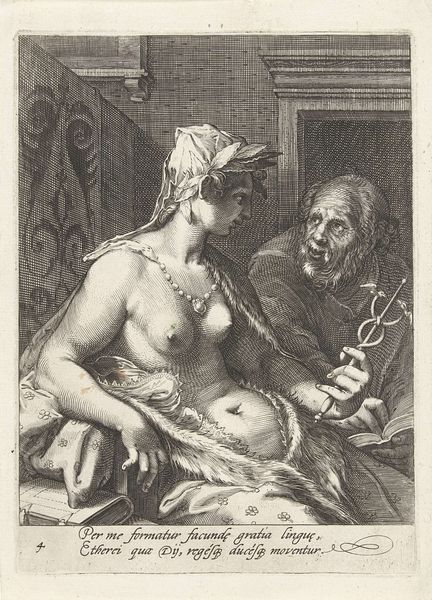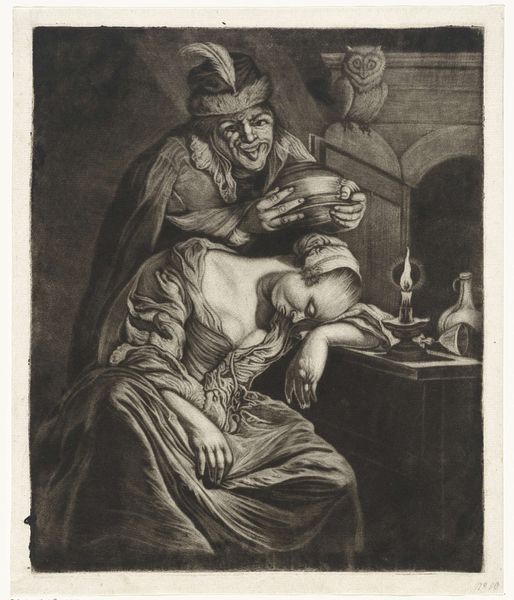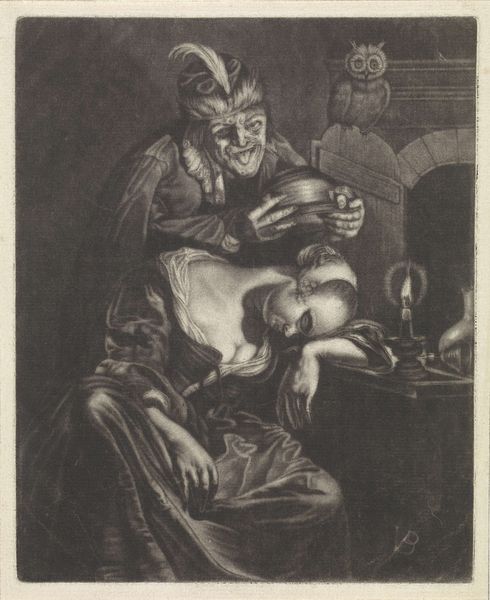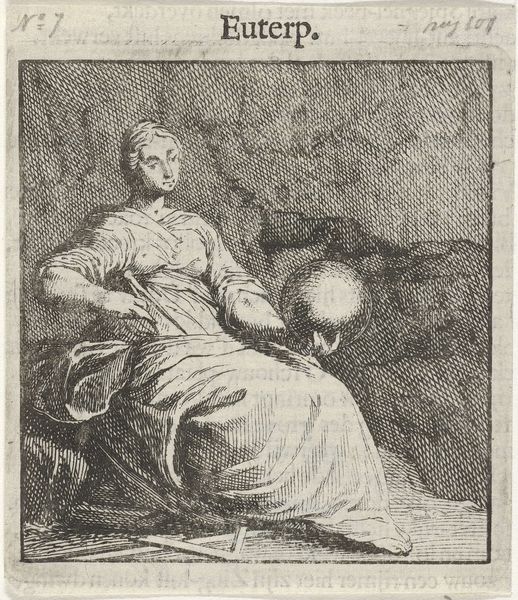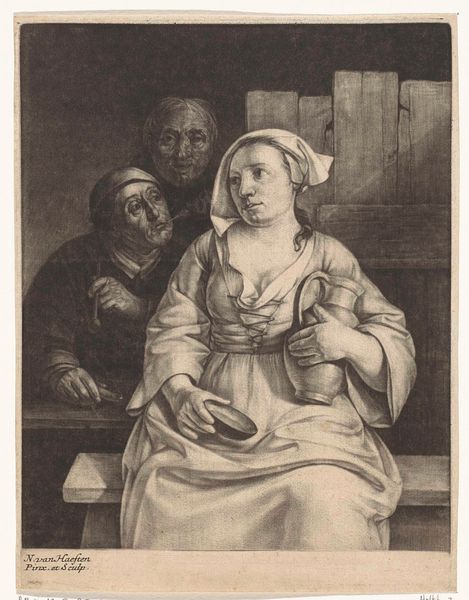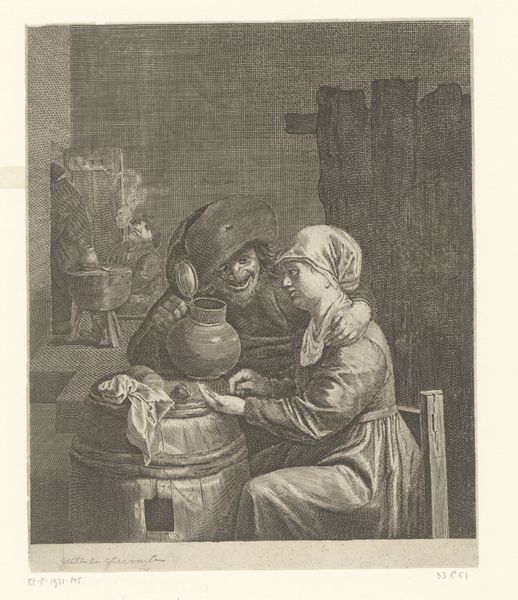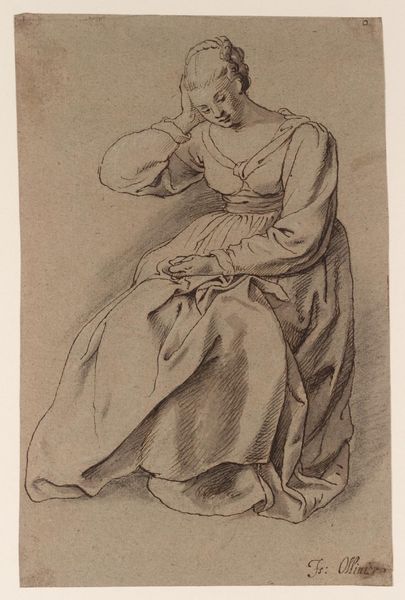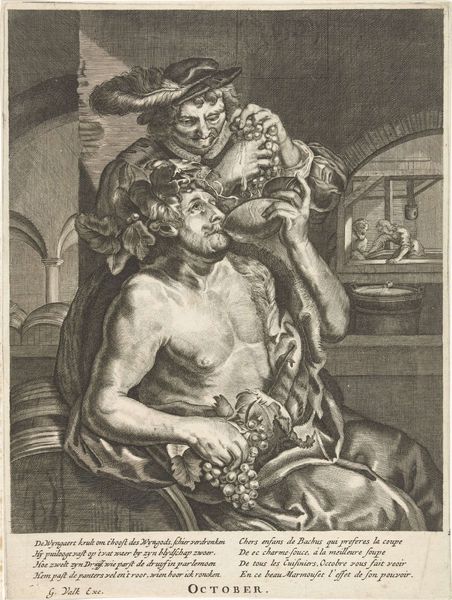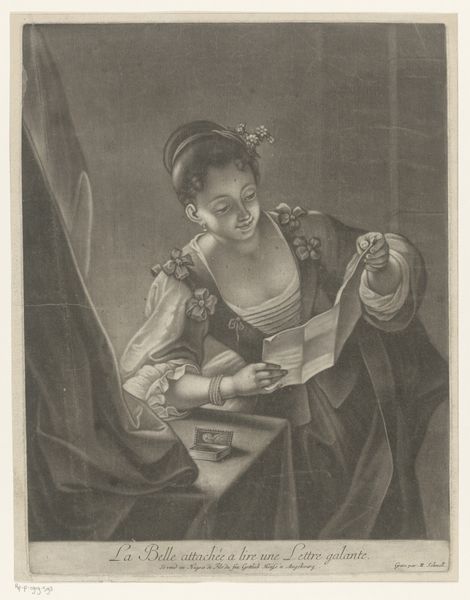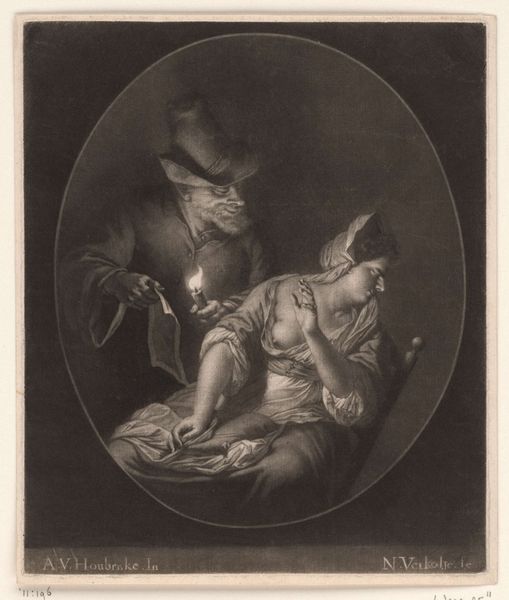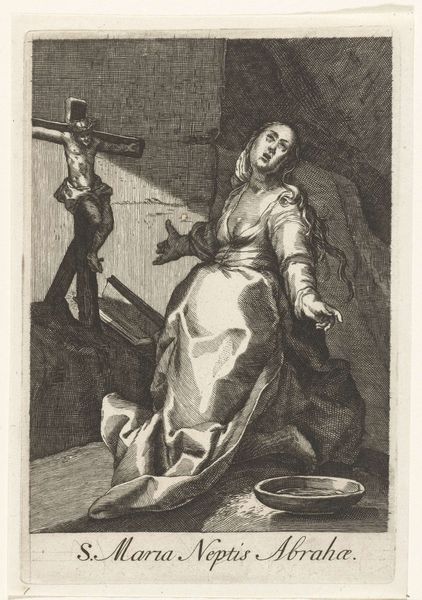
print, etching
#
baroque
# print
#
etching
#
figuration
#
genre-painting
#
nude
#
realism
Dimensions: height 190 mm, width 139 mm
Copyright: Rijks Museum: Open Domain
Curator: Looking at "Zich vlooiende vrouw," or "Woman Catching Fleas," an etching attributed to Cornelis Dusart, likely created between 1670 and 1704, what strikes you initially? Editor: A rather intimate, almost uncomfortable portrayal. The circular frame confines her space, highlighting a private act rarely depicted. There's a stark realism to her exposed body. Curator: The etching technique itself, with its precise lines and tonal gradations, constructs a compelling image. Note how Dusart uses light and shadow to direct the viewer's eye, especially to the woman’s focused gaze. Editor: True, but what does it mean to frame this everyday, perhaps even stigmatized, act? Is it intended as social commentary, highlighting hygiene disparities, or merely exploiting a woman's vulnerability for entertainment? The domesticity is undeniable—the lamp, the simple bowl on the table—but it all feels… performative, viewed through a male gaze. Curator: Perhaps we can understand it as a meditation on observation itself. The composition, enclosed in its circle, acts almost like a lens, calling attention to the artifice inherent in any attempt to represent reality, rather than any simple judgement of her or the act portrayed. It acknowledges the distance between observer and observed. Editor: I am curious about the assumptions of a baroque viewer here. What were they invited to see, think, or learn about this woman in this situation? Curator: Considering the material reality of etching—the metal plate, the acid, the deliberate act of inscription—allows us to recognize the level of formal manipulation needed to arrive at such an image. It's not simply a candid snapshot, but a highly constructed representation of observation and intimacy. Editor: Still, it leaves me uneasy. This kind of genre scene walks a tightrope between realism and objectification. Ultimately, it is a fiction about the poor. Curator: Perhaps the image lies in the uncomfortable space between the visible and the hidden, the constructed and the 'real' giving it a potent resonance that endures even today. Editor: I see it instead as an important reminder of the need to consider the power dynamics inherent in visual representation, particularly when those representations involve vulnerable individuals.
Comments
No comments
Be the first to comment and join the conversation on the ultimate creative platform.
